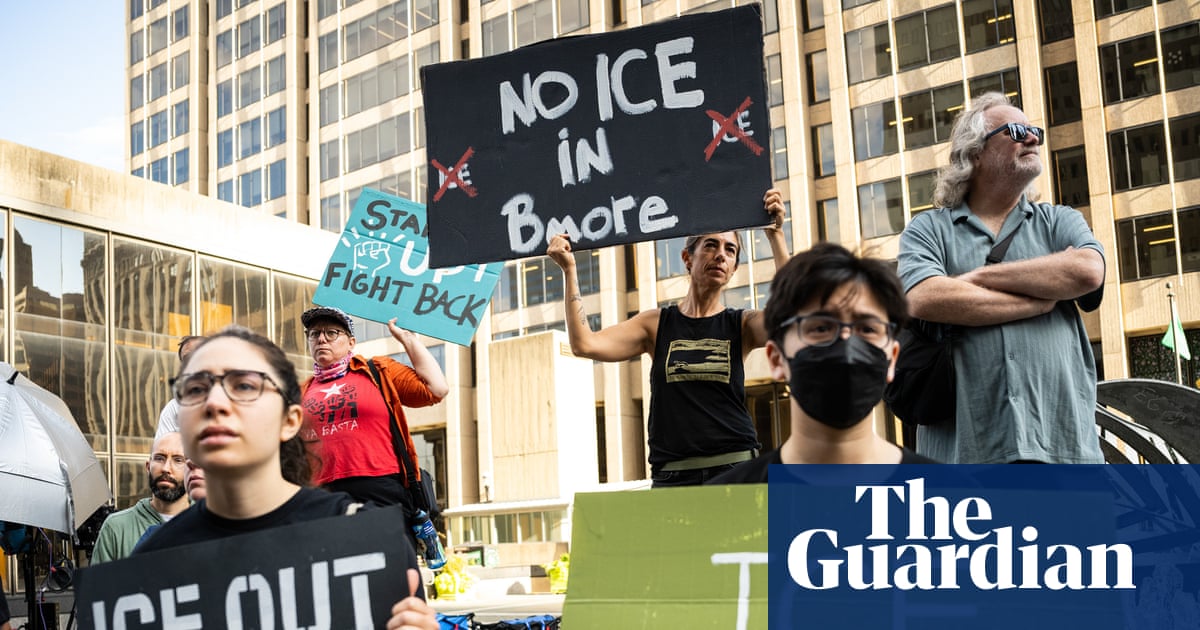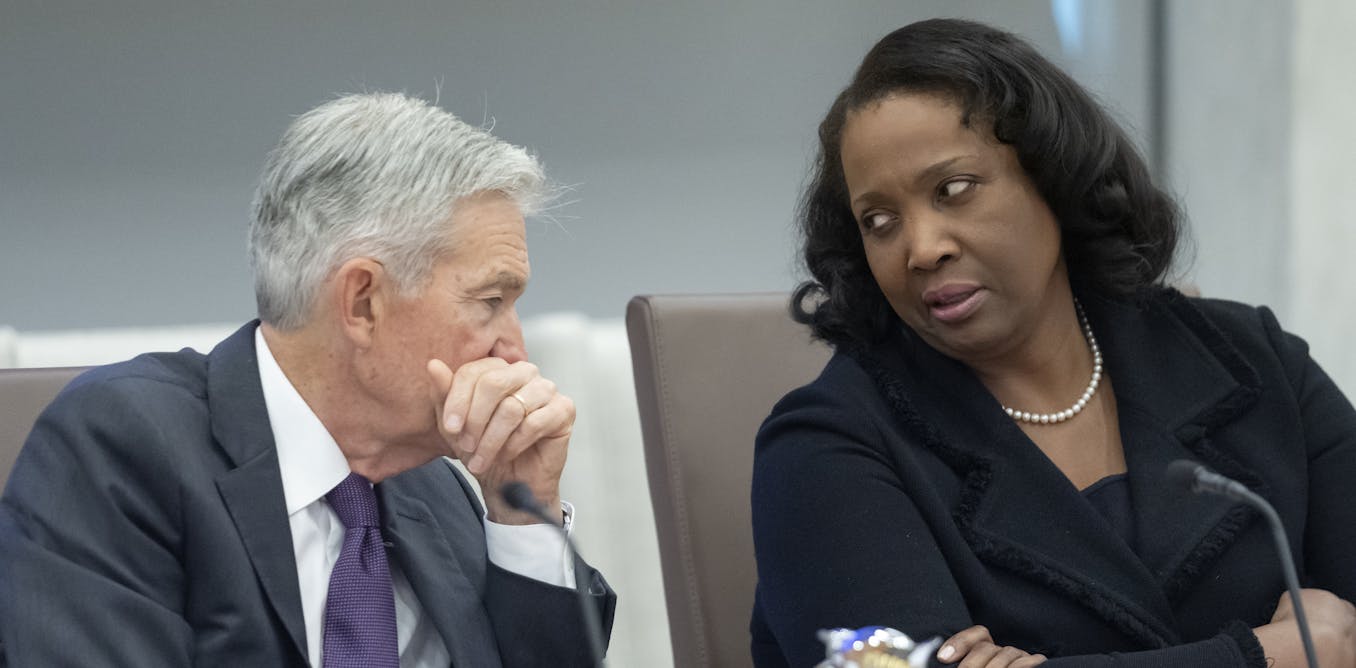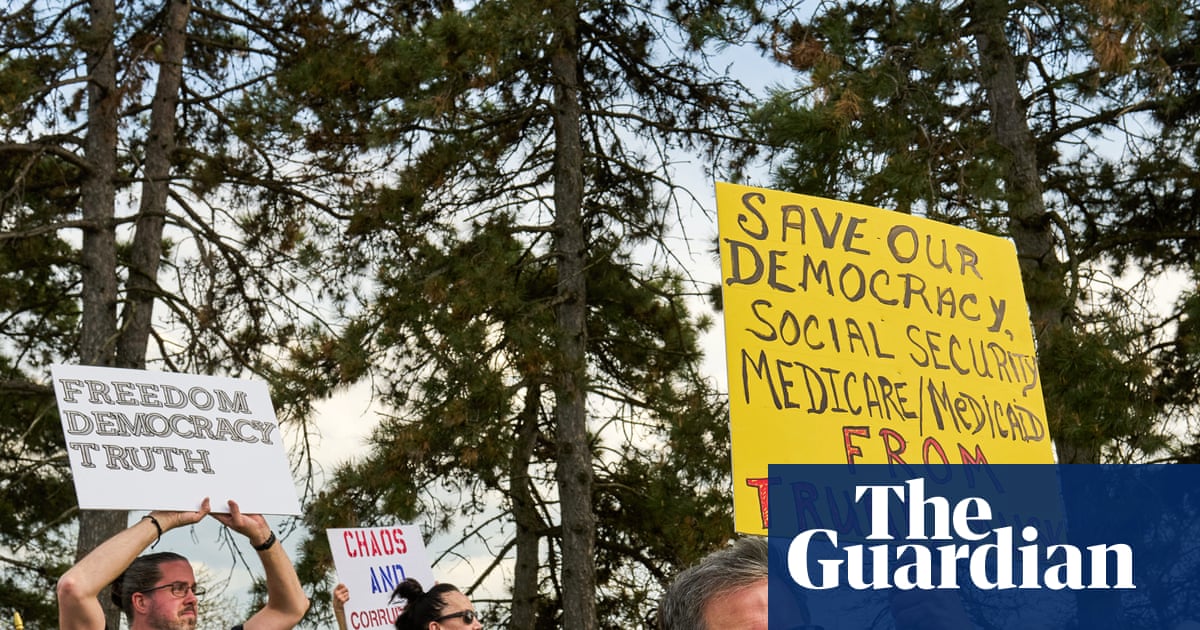Donald Trump widened the Republican coalition in November in a way the party hadn’t seen in decades, winning support from parts of the electorate that Democrats had long taken for granted.
But as Trump has brought in more ideologically and racially diverse voters, he has made an already strained GOP more prone to internal conflict and fundamental disagreements about what it means to be a Trump supporter.
The Washington Post identified six main factions of today’s Republican Party, spanning wealthy Silicon Valley executives and health-conscious moms along with the business leaders, antiabortion activists and budget-cutting conservatives who drove earlier eras of GOP politics.
In the first months of Trump’s administration, fault lines in that coalition have repeatedly surfaced - over tariffs, the scope of deportations, federal budget cuts, and whether countries such as Ukraine and Israel should receive aid.
By force of personality and his popularity among Republican voters, Trump has held his coalition together. He celebrated a major victory last month with the passage of his One Big Beautiful Bill, which rewarded several of the party’s factions as it made its way through a closely divided Congress.
Doubts remain within the party about how a coalition whose unity depends so heavily on Trump will hold together in coming years when his role changes. There is disagreement, too, about whether the wide tent is more gift or curse.
“Tensions and stresses are not only nothing new, they are the origin story of the Republican Party,” which was formed in the lead-up to the Civil War, said Ralph Reed, founder of the Faith and Freedom Coalition and a veteran Republican consultant. “They are not a sign of the party’s weakness. They are one of the reasons for its success.”
Stephen K. Bannon, a former top Trump adviser who now hosts the “War Room” show widely watched by Trump’s MAGA populist supporters, likened Trump’s coalition to the widely divergent, mutually suspicious groups Franklin D. Roosevelt assembled into his coalition in 1932.
“You had super-progressive professors from Harvard, to racist crackers in the South, to ranchers in the West, to businessmen in Chicago and on Wall Street - and by the way, those factions went after each other viciously,” Bannon said. “It’s not unique in American politics for people and coalitions to be going after each other.”
Laura Loomer, a right-wing commentator and journalist who has influenced Trump on a number of personnel decisions in recent months, takes a different view.
“Coalition building, in my opinion, is toxic long term,” she said. “It might have short-term benefits. But long term, it’s going to be explosive.”
Here are the factions at play.
- - -
MAGA populists
Marjorie Taylor Greene, Stephen K. Bannon, JD Vance
Largely working-class, anti-immigration and anti-interventionist, these voters form the core of the president’s political base. They are the supporters who stand outside for hours in the summer heat to attend Trump rallies and who wear MAGA caps and T-shirts with his face on them.
MAGA voters tend to support Trump’s tariffs, believing they will increase U.S. manufacturing jobs.
While not all populists are hyper tuned-in online, many consume a steady diet of right-wing media and social media. They’re more likely than other factions to regularly listen to commentary about the 2020 election being stolen - segments sometimes supplemented with top election denier Mike Lindell marketing his MyPillow products live on air.
Many populist voters also believe that one of Trump’s top priorities should be to expose corruption in a system they see as covering for the rich and powerful in both parties at the expense of the working class. That’s why the MAGA movement has been especially agitated that the Trump administration has not released more information about the case of Jeffrey Epstein, the late financier whom the government charged with sex trafficking of minors.
In the Trump coalition, Bannon said, populists are “clearly the dominant force.” He pointed to an analysis of election data by the nonpartisan Pew Research Center showing that Trump doubled his lead among voters who did not graduate from college, increased his lead among rural voters, and improved with Hispanic and Black voters between 2016 and 2024. Many of those changes reflect gains among populists, Trump’s strategists say.
“Now, does that show up in elected officials’ votes in the House and the Senate? No,” Bannon chuckled, adding that many “old-school Republicans” and “neoliberal neocons” still needed to be replaced.
Groups such as Charlie Kirk’s Turning Point USA and Bannon’s “War Room posse” often channel the energy of the populist audience to rail against Republican politicians they see as insufficiently MAGA (Sen. Lindsey Graham of South Carolina, for example). Rep. Marjorie Taylor Greene of Georgia has harshly criticized party leaders recently, saying the GOP has “turned its back on America First and the workers.”
The rise of populist sentiment has reopened long-settled debates in the GOP. Sen. Josh Hawley of Missouri, for example, has called for the party to become more union-friendly. In the spring, Bannon floated the idea of a tax on millionaires to cover the cost of some of Trump’s programs.
“Populism is the future of American politics, whether it’s right-wing populism or left-wing populism,” Bannon said, noting New York City Democrats’ selection of a Democratic socialist as a mayoral nominee.
- - -
Traditional Republicans
Glenn Youngkin, Lindsey Graham, Brian Kemp, John Thune
Cozying up to unions and raising taxes on the rich are nonstarters for the GOP’s traditional business-oriented faction, which has succeeded so far in bottling up both ideas. On other topics, especially tariffs, the traditionalists have suffered losses.
The traditional wing of the party largely supports free markets and free trade, lower taxes and smaller government, except for the military. For the most part, these Republicans align with social conservatives on cultural issues - that’s just not their primary focus. They aren’t as anti-immigration as the populist wing and are more supportive of military involvement overseas.
Trumpian politicians and activists have often declared that traditional Republicans have lost their relevance, and some have been pushed out of office by challenges from the right. But this wing of the party, which includes many big donors, has also won on some major priorities, especially the continuation of the 2017 tax cuts, which was a central component of Trump’s legislative package.
The Senate’s majority leader, Sen. John Thune of South Dakota, is representative of this faction, as are Republican governors including Glenn Youngkin of Virginia and Brian Kemp of Georgia.
Trump’s comments about not deporting workers at farms, hotels and other businesses - and the furious responses those musings have drawn from the MAGA wing - reflect the tension between the party’s traditional and populist wings.
Another big split involves tariffs. The network of conservative organizations funded by billionaire Charles Koch has played a central role in challenging the import taxes in court, drawing a furious blast earlier this year from the president.
“A lot of people within the traditional bounds of the Republican Party, the Chamber of Commerce types and the traditional Grover Norquist types and the like, their public messaging to accommodate the populists has changed,” said Erick Erickson, a conservative radio host, referring to Norquist, a prominent anti-tax advocate.
“But privately, they still believe in business and free markets and tax cuts and not massive government control. And that, I think, becomes a future fight when Trump leaves.”
- - -
Small-government conservatives and fiscal hawks
Ted Cruz, Ron DeSantis, Rand Paul
While the traditional Republicans have largely decided to accommodate Trump, the party’s more libertarian faction has been a persistent thorn.
Sen. Rand Paul and Rep. Thomas Massie of Kentucky in particular have been in Trump’s crosshairs for refusing to support his One Big Beautiful Bill because it would worsen the federal deficit.
Some politicians and activists in this group, such as Florida Gov. Ron DeSantis, have roots in the tea party movement that gained traction after President Barack Obama’s 2008 election and that year’s financial crisis. They are overwhelmingly conservative on social issues, though fights over spending have been their central concern. DeSantis, whose political career began in Congress, was a founding member of the House Freedom Caucus.
Paul and Massie have been outspoken against foreign military intervention, while Sen. Ted Cruz of Texas has been much more open to it, recently championing Trump’s strikes on Iran.
- - -
Religious right
Marjorie Dannenfelser, James Lankford, Mike Johnson, Ralph Reed
Since Trump took office in 2017, the socially conservative wing of the Republican Party has notched wins it spent decades pursuing - most notably, the 2022 Supreme Court ruling that overturned Roe v. Wade.
In Trump’s second term, this wing’s impact has been less obvious.
In his first term, Trump credited the religious right with winning the presidency for him. This time around, Trump’s coalition has widened to include groups much less aligned with conservative Christianity (such as young male “podcast bro” voters and the “Make America Healthy Again” constituency). As result, social conservatives haven’t dominated every policy fight.
Some in the antiabortion movement sought last year to push Trump to embrace a national limit on abortions, but he refused, saying he preferred to leave the issue to the states. At Trump’s direction, the party in 2024 dropped long-standing platform language endorsing a constitutional amendment that would ban abortions nationwide.
But evangelical Protestant and conservative Catholic figures still play key roles in Trump’s policymaking. In last month’s legislative package, they won a major expansion of the child tax credit and money for private-school vouchers, along with blocking Medicaid funds from going to clinics that provide abortions - a provision that antiabortion leaders such as Marjorie Dannenfelser, president of Susan B. Anthony Pro-Life America, had pushed for.
House Speaker Mike Johnson of Louisiana, a devout Southern Baptist, is a powerful voice for social conservatives. Sen. James Lankford of Oklahoma, who spent years in Southern Baptist ministry before running for Congress, is another prominent figure.
Support from social conservatives helped Trump make strides with Hispanic voters in 2024. Reed’s organization had one of the largest voter-turnout operations of the 2024 election, focused on mobilizing Hispanic voters.
- - -
Tech right
Marc Andreessen, David Sacks
Until recently, billionaire Elon Musk was the leading figure among tech executives who came around to supporting Trump. Musk spent roughly $290 million on Trump in the 2024 election. But after Musk’s spectacular public falling-out with Trump in June, other tech executives have vied to fill the void.
Much of Silicon Valley remains in the Democratic camp, but 2024 saw a surge of support for the tech right, which has since sought to influence Trump on matters related to artificial intelligence, cryptocurrency and more.
Some figures in the tech right advocate for free speech and have slammed what they see as censorship by large tech and social media companies. Others advocate less regulation of artificial intelligence and biotechnology - which they say would allow the United States to better compete with China - and seek less strict regulation of cryptocurrencies.
Many in the tech right have clashed with other factions, especially the populists, over admitting more highly skilled immigrants to the U.S. Prominent tech leaders and Loomer were at odds over the issue shortly before Trump’s inauguration. Vance has attempted to act as a bridge between the two camps.
Some top leaders in tech, such as Meta’s Mark Zuckerberg and OpenAI’s Sam Altman, didn’t endorse Trump in 2024 but since have made efforts to curry favor. Marc Andreessen, a longtime Silicon Valley entrepreneur and investor, endorsed Trump last year after previously being critical of his policies, ultimately donating to his presidential bid. Peter Thiel, the billionaire PayPal founder, was a Vance ally and key backer of his 2022 Senate run, but sat out as a donor in the 2024 election.
Conservative tech figures have also taken prominent positions in the administration. Former PayPal executive David Sacks was appointed as White House crypto czar. Jacob Helberg, a co-founder of the Hill and Valley Forum, an influential interest group founded by tech leaders, is Trump’s nominee for undersecretary of state for economic growth, energy and the environment.
So far, however, the tech right remains more of a collection of prominent individuals than a mass movement.
“Maybe in future elections the tech right will grow and become more of the rider of the horse rather than the wagon that’s being pulled,” said Samuel Hammond, chief economist at the Foundation for American Innovation. “But for now, their role is fairly narrow.”
- - -
MAHA and other converted Democrats
Tulsi Gabbard, Robert F. Kennedy Jr.
Some longtime Democrats - including two who had recently run for president with a “D” next to their names, Robert F. Kennedy Jr. and Tulsi Gabbard - said they were no longer aligned with the party in 2024. They offered a range of reasons, including that the Democratic Party had gone “woke.”
Within the crop of disaffected Democrats supporting Trump last year, Kennedy led a movement of voters willing to take a chance on the McDonald’s-loving Republican because they believed he would hear their concerns about health and medical regulations and be open to new approaches.
Kennedy became the face of the “Make America Healthy Again” movement. Many of those who supported him share a skepticism of vaccines, concerns about chemicals in food, criticism of pharmaceutical companies and belief in his promises to tackle America’s obesity and chronic-disease problems.
Tensions between the MAHA and MAGA camps have flared periodically. Loomer, for example, has attacked some prominent Kennedy appointees over their Democratic ties.
Gabbard, a former Democratic congresswoman who ran for president as a Democrat in the 2020 election, endorsed Trump in fall of 2024 and was subsequently named his director of national intelligence. She was confirmed despite pushback from some hawkish Republicans who questioned whether she had been overly friendly to authoritarian regimes.
People not previously affiliated with Republican politics - fitness expert Jillian Michaels and California-based social media influencer Jessica Reed Kraus, for example - have credited their public embrace of Trump to figures including Kennedy and Gabbard.
Other notable pop culture figures endorsed Trump for the first time in 2024, though making clear that they weren’t signing up to be permanent members of the GOP. Podcast and social media personalities such as Joe Rogan and Dave Portnoy said Trump was the better pick, but have offered a mix of criticism and praise since he entered office.
What remains to be seen is whether this faction of newcomers will stay in the Republican camp once Trump moves off center stage.
- - -
Emily Guskin contributed to this report.
GRAPHICS
https://washingtonpost.com/documents/f11e106a-f74a-4195-8787-52af7f944331.pdf
https://washingtonpost.com/documents/1ef9ce07-173f-41f6-a766-d81e8439f60f.pdf
https://washingtonpost.com/documents/68d38487-331e-4c27-9111-8d66229f0f3e.pdf
https://washingtonpost.com/documents/19715b3d-d4d5-41d0-854b-096df8a8edec.pdf
https://washingtonpost.com/documents/ad065a77-ccff-47a2-93bc-c235207f1f7e.pdf
https://washingtonpost.com/documents/cfa6e8e2-4e17-4f18-a49e-c22c441298d0.pdf
Related Content
Tariffs push small and midsize toy companies into survival mode
As Trump tightens grip on D.C., officers say their chief is absent

 German (DE)
German (DE)  English (US)
English (US)  Spanish (ES)
Spanish (ES)  French (FR)
French (FR)  Hindi (IN)
Hindi (IN)  Italian (IT)
Italian (IT)  Russian (RU)
Russian (RU) 























Comments